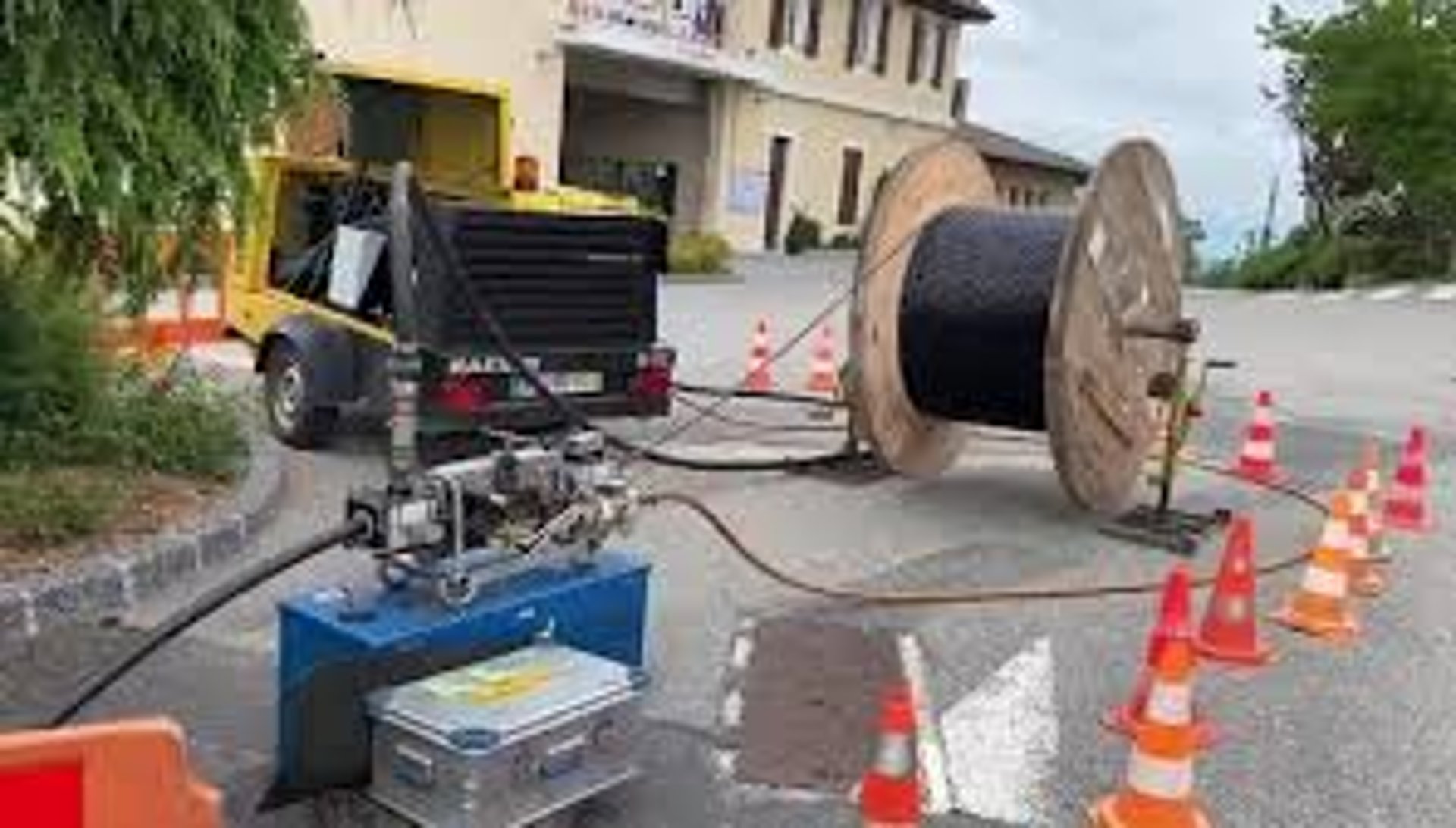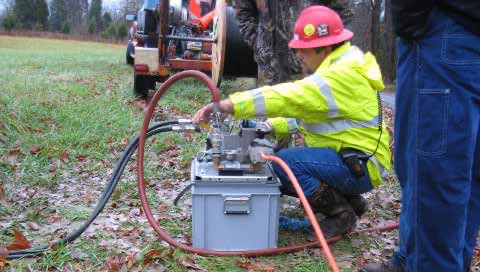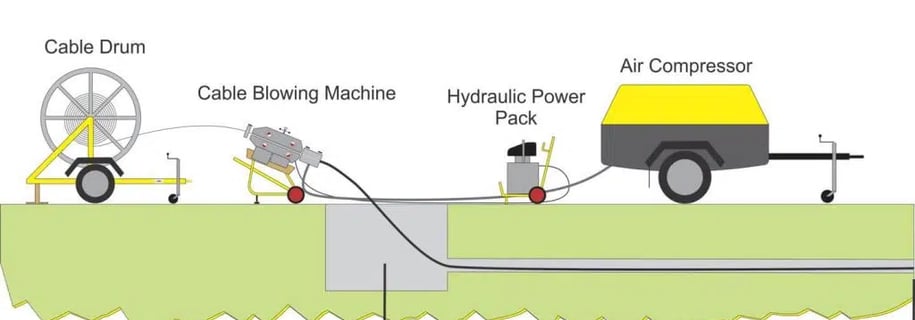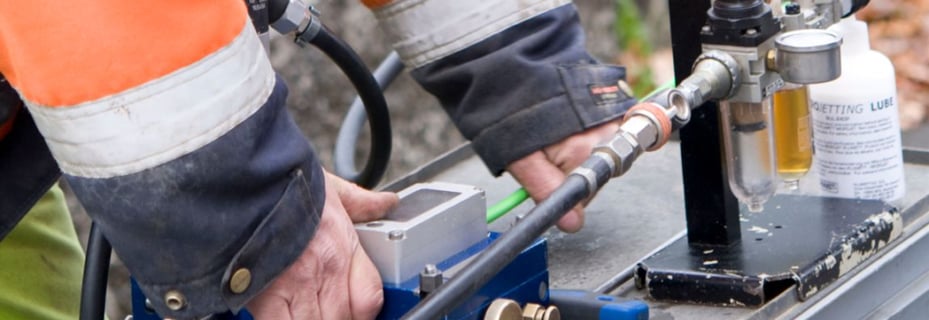
Understanding Air Blown Fiber Cables
Air blown fiber optic cables are lightweight, flexible cables installed into pre-laid ducts using a stream of compressed air.
10/9/2024


Introduction to Air Blown Fiber Optic Cables
Air blown fiber optic cables represent a significant advancement in telecommunications technology, designed to provide enhanced flexibility and ease of installation compared to traditional fiber optic cables. These innovative cables utilize a unique method that enables the insertion of optical fibers into pre-installed ducts using a stream of air. This technology allows for swift and efficient deployment, making it an attractive choice for modern communication infrastructures.
One of the primary advantages of air blown fiber optic cables lies in their adaptability. Unlike conventional cables that require substantial infrastructure alterations for upgrades or repairs, air blown variants allow telecom providers to change services or configurations with minimal disruption. The ability to easily add or replace fibers without physical excavation is particularly beneficial in dense urban environments, where space is at a premium and downtime must be minimized.
Another notable benefit is the future-proofing capability that air blown fiber optic cables offer. As demands for bandwidth continue to escalate, the internal configuration of these cables can be modified to accommodate higher data rates without the need for complete system overhauls. This adaptability ensures that investments remain viable as technology advances, enabling service providers to keep pace with evolving market needs.
The operational principle behind air blown fiber technology revolves around the use of lightweight microducts, into which the fibers are blown using specialized equipment. This method significantly reduces the installation time and labor costs, creating an efficient workflow for telecom companies. In addition, since the infrastructure is already in place, adding additional fibers becomes a straightforward task.
As air blown fiber optic cables continue to gain traction within the industry, understanding their design and benefits becomes essential for both professionals and consumers alike. This introductory knowledge serves as a critical foundation for exploring more detailed aspects of air blown fiber technology in subsequent sections.
A Comprehensive Guide to Understanding and Installing Air Blown Fiber Optic Cables
Benefits of Using Air Blown Fiber Optic Cables
The adoption of air blown fiber optic cables is increasingly becoming a preferred choice in various applications due to their numerous benefits. One of the most significant advantages is the reduction in labor costs during installation. Traditional fiber optic installation often requires extensive digging and disruption, leading to increased expenses and time delays. In contrast, air blown technology simplifies the installation process, as the cables can be easily and quickly blown into pre-installed conduits, allowing for faster deployment.
Another important benefit of air blown fiber optic cables is the minimized downtime for upgrades and modifications. Organizations that rely on continuous network availability can significantly reduce interruptions by utilizing this technology. The ease of adding or replacing fibers means that updates can be executed without the lengthy processes typically associated with conventional cabling methods. This flexibility not only enhances operational efficiency but also increases overall network reliability.
Moreover, air blown fiber optic systems can lead to environmental advantages. The installation process generates less waste as there is no need for extensive digging, which can harm the surrounding ecosystem. Furthermore, air blown systems are designed for easy upgrades, which means that as technology evolves, there is lower risk of obsolescence, thereby adhering to sustainable practices. This focus on longevity contributes to the long-term economic benefits that organizations experience, as reduced maintenance and operational overhead translate to significant cost savings over time.
In conclusion, the use of air blown fiber optic cables offers a range of benefits, including cost-effective installation, minimal downtime, and environmental sustainability. These attributes make them a versatile option for a variety of applications, underscoring their growing popularity in the fiber optics industry.
Installation Process of Air Blown Fiber Optic Cables
Installing air blown fiber optic cables involves a systematic approach requiring specific tools, careful site preparation, and adherence to safety protocols. The initial step is to gather the necessary tools, which typically include air blowers, ducting, a fiber optic cable reel, a fusion splicer, and testing equipment such as an optical time-domain reflectometer (OTDR).
Prior to installation, the site must be adequately prepared. This includes inspecting the existing ducts for any blockages or damage, as well as assessing the environment to ensure that it is conducive to the proper installation of fiber optic lines. It is crucial to maintain a clean workspace to avoid contamination of the fibers during the process.
Safety considerations cannot be overlooked. Installers should wear appropriate personal protective equipment (PPE), including gloves and safety glasses, to mitigate risks associated with working in confined spaces or near electrical sources. Additionally, following the manufacturer’s instructions throughout the installation process will help prevent accidents and enhance the effectiveness of the installation.
Once the site is prepared, the process of blowing the fibers into the ducts can commence. Fiber optic cables are fed into a duct equipped with a blowing machine that uses pressurized air to propel the cables along the pathway. It is crucial to monitor the tension of the cable while blowing to ensure it does not exceed the recommended limits, which could damage the fibers. Moreover, respecting the specified bend radius of the cables is essential to maintain optimal performance.
After the fiber has been installed, thorough testing is vital to confirm functionality. Techniques such as OTDR testing can identify any faults or attenuation present in the installation. Documentation of the installation process, including testing results, is also important for future reference. By adhering to these guidelines and avoiding common pitfalls, such as excess tension or improper bends, technicians can effectively install air blown fiber optic cables, ensuring a reliable and efficient network.




Maintenance and Troubleshooting of Air Blown Fiber Optic Cables
Maintaining air blown fiber optic cables is essential for ensuring the longevity and reliability of fiber optic networks. Regular maintenance tasks can significantly enhance the performance of these systems. One of the primary steps in maintenance includes routine inspections of the installation to check for any physical damage or signs of wear. This may involve examining junction points and ensuring that protective conduits are intact and free from debris.
Another critical aspect of maintenance is monitoring the network for signal loss. Utilizing diagnostic tools such as optical time domain reflectometers (OTDR) can aid in identifying faults and issues within the fiber system. By analyzing the results from these diagnostic tools, operators can determine whether the problem lies in the fiber itself, connectors, or at specific junction points. Understanding the acceptable loss budget for your network configuration can help indicate when intervention is necessary.
Best practices for air blown fiber optic cables include maintaining the system's environment. Temperature fluctuations and exposure to moisture can adversely affect the performance of fibers. Therefore, it is advisable to house cables in controlled environments where temperature and humidity levels are monitored. Furthermore, adhering to installation guidelines regarding bends and excessive tension on the cables is vital, as these can lead to micro-bending or macro-bending, both of which can compromise signal integrity.
In the event of detected signal loss or physical damage, quick action is essential. Replacement protocols may involve re-splicing damaged sections or replacing entire fibers as necessary. Keeping a well-documented inventory of spare parts and accessories is beneficial for quick resolutions. By implementing a proactive maintenance plan and being prepared to troubleshoot effectively, network operators can ensure optimal performance and reduce downtime in their air blown fiber optic systems.
Your trusted online source for fiber optic products.
© 2025, All rights reserved to Fiber Xpress Mart.
Contact Us


